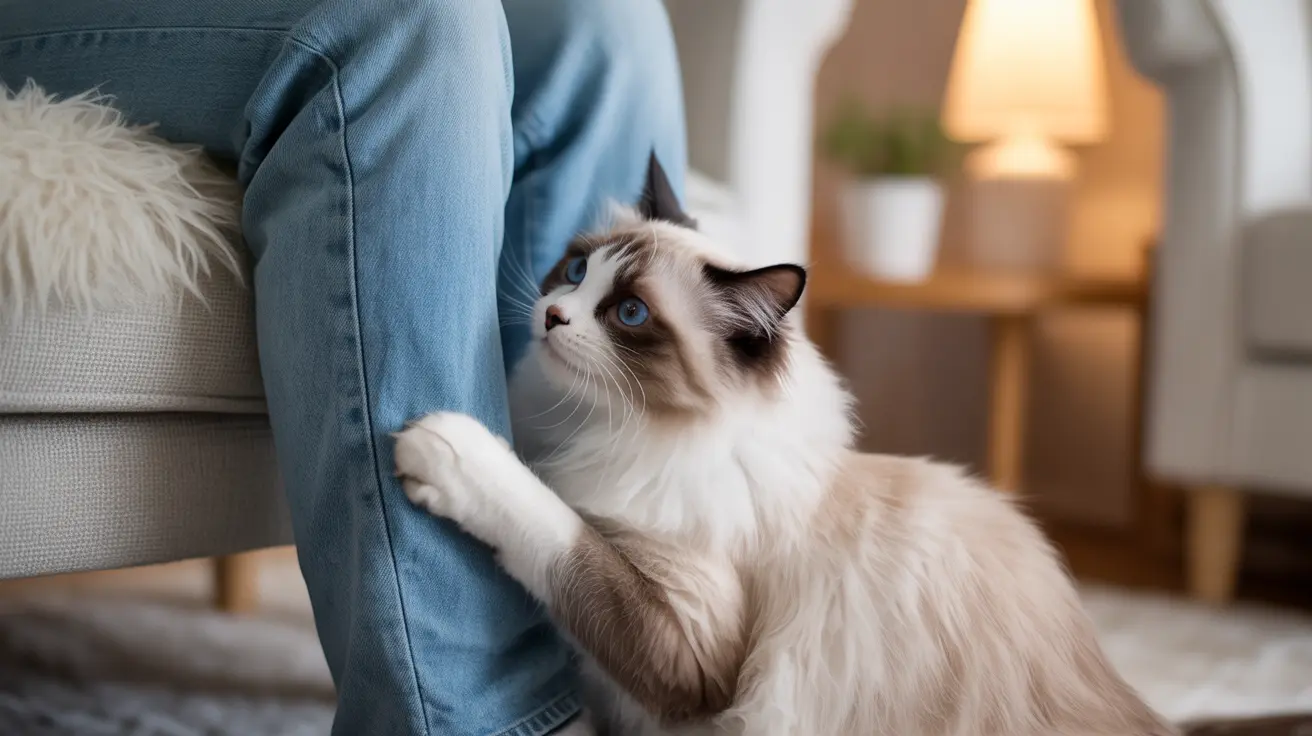If you've ever wondered why your feline friend constantly rubs against your legs or furniture, you're not alone. This common behavior, known as "bunting," is a fascinating aspect of cat communication that serves multiple purposes in their social and territorial lives.
Understanding why cats rub against things and people can help you better interpret your pet's needs and strengthen your bond. Let's explore the various meanings behind this endearing feline behavior.
The Science Behind Cat Rubbing Behavior
When cats rub against objects or people, they're using specialized scent glands located on their faces, flanks, and tails. These glands release pheromones – chemical signals that communicate important information to other cats and mark territory.
The primary scent glands are found in these locations:
- Cheeks and chin
- Forehead
- Base of tail
- Paw pads
Social Bonding and Greeting
When your cat rubs against you after you return home, they're engaging in a natural greeting behavior. This action serves multiple purposes:
- Welcoming you back to their social group
- Reestablishing their scent on you
- Expressing happiness and contentment
- Strengthening your social bond
Territory Marking and Ownership
Cats are territorial creatures by nature. When they rub against furniture, doorways, or their favorite humans, they're essentially saying "this belongs to me." The behavior helps them:
- Create a familiar environment
- Mark boundaries of their territory
- Communicate their presence to other cats
- Establish ownership of resources and spaces
Stress Relief and Comfort
Rubbing behavior can also serve as a self-soothing mechanism for cats. When feeling anxious or uncertain, cats may increase their marking behavior to:
- Create a more familiar-smelling environment
- Reduce stress and anxiety
- Establish control over their surroundings
- Feel more secure in their territory
Multi-Cat Household Dynamics
In homes with multiple cats, rubbing behavior takes on additional significance. Cats will often engage in mutual rubbing to:
- Create a shared group scent
- Maintain social harmony
- Establish and reinforce relationships
- Reduce potential conflicts
Frequently Asked Questions
What does it mean when my cat keeps rubbing their head or body against me?
This behavior primarily indicates affection, ownership, and social bonding. Your cat is marking you as part of their family group while also expressing trust and contentment.
Why do cats rub against people to mark them with scent?
Cats use scent marking to create a familiar environment and identify members of their social group. When they mark you, they're claiming you as part of their territory and trusted circle.
How can I tell if my cat is rubbing against me for affection or to seek attention?
Look for additional body language cues. If accompanied by purring and relaxed body posture, it's likely affection. If combined with meowing and persistent behavior, they might be seeking attention or resources.
Is it normal for cats to rub against multiple family members or other pets in the house?
Yes, this is completely normal. Cats will mark all members of their social group to create a communal scent and maintain group harmony.
What should I do if my cat rubs against me excessively or starts biting while rubbing?
Excessive rubbing or rubbing combined with biting might indicate overstimulation or attention-seeking behavior. Establish consistent boundaries and provide regular playtime to manage these behaviors.
Remember that rubbing behavior is a natural and healthy part of feline communication. By understanding and respecting this behavior, you can better appreciate your cat's attempts to communicate and bond with you.






